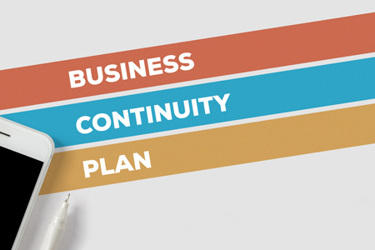Built-In Business Continuity
By Michele Borovac, CMO, Workspot

Change is a constant, and it sometimes comes in sudden and significant ways that few businesses could have been prepared for. This time it’s a pandemic; next time, it could be a weather event, a massive internet-based attack, or some new kind of threat. Whatever the disruption, organizations must plan to the best of their ability to both safeguard the well-being of employees and keep the business up and running.
Instituting the infrastructure and culture to support remote work can give your organization the agility to weather changing market conditions. With the recent explosive growth in remote work, there is an opportunity to consider how cloud computing, and specifically cloud desktops, can help organizations tackle employee safety – and productivity - with success.
Flaws In Traditional Planning
Any comprehensive business continuity plan must include disaster recovery. For a scenario where companies have employees who can’t get to their computer in the office, there are two legacy disaster recovery solutions for physical PCs. You can reserve a mobile disaster recovery unit that is delivered on-site, or you can redirect people to an alternative building that is outfitted with the appropriate IT equipment.
These two approaches both come with a big price tag, intricate planning, and challenges that create risk for your organization. When re-evaluating your approach to business continuity for employees who typically work in an office, ask yourself “What if…”:
- Employees can’t travel to the alternate designated work site due to physical barriers (downed trees, earthquakes, etc.)?
- What if travel is restricted due to health concerns?
- What if you need more PCs than you had planned for?
- What if the disaster is so widespread that availability is limited during peak demand?
- What if you can’t easily test the solution to make sure everything works?
Cloud Resilience
With so many organizations shifting some or all their IT infrastructure to the cloud, it only takes a few simple steps to set up “standby” cloud desktops and workstations that are just one click away when you need them. Business continuity and disaster recovery constitute more than just enabling cloud desktops, of course. However, with them as part of your plan, you’ll be able to support people getting back to work within minutes or hours, from any device, and from anywhere they have an internet connection. That is a powerful resource in terms of protecting both people and productivity.
Overcoming Cloud Risk
Every business always wants to be up and running, so they strive for 100 percent uptime. This is just good business continuity planning; anticipating different disruption scenarios and then defining how each will be addressed. Cloud computing is now mainstream, and as more organizations go “all-in” on cloud desktops for the many significant benefits it delivers, they also need to be prepared for cloud outage scenarios.
But what if a whole public cloud region goes down? Though unusual, it is a risk and it can happen (and has happened), resulting in business disruption. Large organizations moving desktop workloads to the public cloud need to plan for this possibility with the ability to fail-over to an alternate cloud region. With this fail-over ability, you can achieve even greater risk mitigation for your organization.
Shutting Down Illness
Most organizations plan for disaster recovery for one location. The recent global shutdown provides the perfect example of a disaster whose scope and impact no business continuity plan could have fully prepared for. Consequently, organizations are trying to rapidly adjust their plans to protect employees while also protecting their business from financial and economic downturn. But how do you remain productive if your employees are advised not to come into the office? This is a critical question that brings up another one: What if, rather than merely being “encouraged,” working at home was a mandatory part of a business continuity plan during a disease outbreak?
This new approach could work this way: If an employee shows up at the office with a contagious illness, everyone immediately retreats to their home offices for a week or so to wait out the incubation period. Better still, the contagious person doesn’t come to the office in the first place but stays home at the first sign of illness, preventing others from getting sick. Adding cloud desktops to your business continuity plan can make remote work more routine, where the transition from office to home becomes seamless.
Making Remote Work Secure
When you include cloud desktops in your business continuity strategy, it’s important to consider your security and compliance posture. Will data land or remain on edge devices? Will data be encrypted? Is IP theft possible? What user errors might jeopardize security? Make sure to think through the entire project so that remote work becomes a business enabler rather than a liability. Cloud desktops can be a more secure option. Unlike VPNs, which allow access inside an organization’s firewall, and can’t prevent users from downloading data to their computer, cloud desktops can provide a secure ‘view’ into necessary applications and data, and data never resides on the endpoint.
What Comes Next
No business wants to be caught off guard and end up with a workforce unable to work, hobbling the company. Business continuity and disaster recovery have gotten a whole lot more complex lately; just planning for an alternate office site won’t cut it anymore. Remote work must become an accepted, fully integrated part of most businesses, and organizations that can’t adapt will fall behind. Cloud desktops offer the anywhere, anytime agility that crisis requires. And, with the right set-up, employees can work from any region with little fear about outages. Including the cloud in your business continuity planning creates a firm foundation for whatever comes next.
